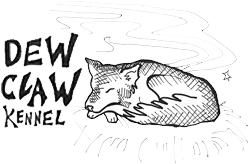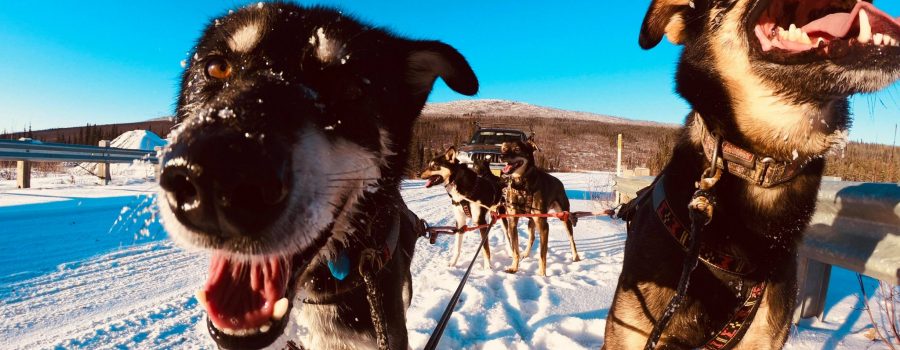
A large team can be safely run off a truck when there is not enough snow for a sled.
How do you prepare a team for a winter of adventure and tours, well truck training of course. ‘Truck training’ is one of those phrases like ‘dog cooker’, ‘wet snack’, ‘drying booties’ and ‘drop bags’ mushers use in regular conversation with other mushers. But having dropped the phrase on my non mushing friends; for example “can’t come to your event cause I will be truck training all weekend”, I have come to the realization that it might require some explanation. So for anyone who is not truck training in a major way Victoria and I (Jodi) are here to enlighten you. And thanks to Victoria’s mad skills with media we can share some of our truck training adventures with you, enjoy.
But first, why truck train? Or quad train for that matter. Doesn’t seem much like the image of musher and team traveling quietly across a frozen wilderness, and to be perfectly honest it is not. It is a mechanical means of running a team. But it is a critical part of getting to the point where we will be happily on the sled working with a beautiful team. These early season miles build capacity, muscle, and endurance. it is an opportunity for us to build confidence, trust and communication with the team. Like the quad, the truck is running. The dogs are not actually pulling the vehicles, we are using them as a means to get everyone out training. It is a means to an end… and since the end goal here is a fun winter or adventure then it is worth it.
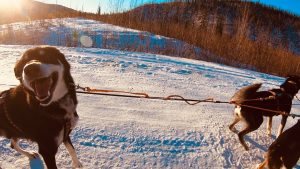
Hansom Hans is happy to be out on a beautiful day
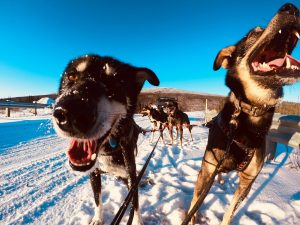
The dogs don’t mind the truck one bit.
Would we prefer to be on sleds? Oh yes! But until there is enough snow to do so safely (without enough snow to use your brake and set a snow hook you can not stop or hold a team) we have 2 options. Do nothing, and as anyone who knows me knows that is not really an option. So we move on to option 2, finding safe effective ways to get our team out and have as much fun as we can till the snow comes. From what I can tell the dogs don’t seem to mind, they love going out no matter how they get there, and their enthusiasm is contagious. Hard to be grump at work with this team for co-workers.
Earlier in the season we used a quad on local trails. As we start go longer distances truck training is the most time effective way to train. The truck allows us to control the speed and completely brake and hold a large team, 2 people can work together to ensure things go smoothly, and if I am being completely honest has a heater and is much more comfortable then the quad when you are running for hours at a time.
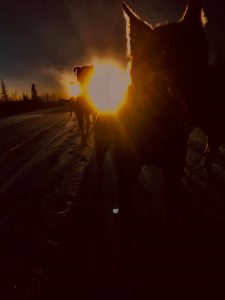
Another long day at work
Bottom line, we love these dogs and we are willing to do what it takes to ensure the team is conditioned and ready to go this winter; something all of us at Dew Claw are all very much looking forward to. **shameless self promotion alert** Remember if you are in Alaska you can join our team for an adventure, contact us for info or book online.
So what does all of this look like? Well again thanks to Victoria I can show you.
We are very lucky to have some suitable un-maintained dirt roads we can use for truck training near to the house. But it still means we have to hook up the trailer and bring the dogs to our location. There we hook up our gangline and harness the team for a run. Again, it is extra work and effort to do all this, but well worth it in the long run. (and yes that was a corny distance mushing pun)
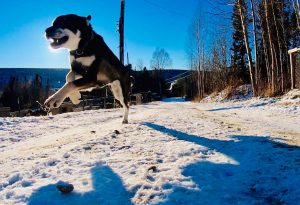
Emu enjoys a little free run on her way to get loaded in the trailer.
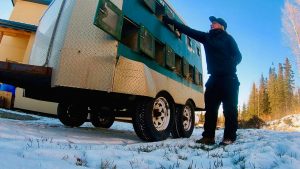
Ready to load up the team
Loading can take a long time, here is the speedy version. You can see we still have our kennel flood lights on as it is just getting light when we head out.
Again with the speedy video, since the real time hook up is a bit longer. Here we are hooking up 21 dogs. We have been working with the lead dogs on holding out the whole team while we hook up. Not perfect, but still pretty pleased with how the front end handles the job.
And then we RUN! this is where we slow things down so you can really see these athletes.
While we are out on these longer runs we have planned stops to rest and snack the team, and we make additional stops to check dogs feet and general condition.
And here is a wonderful image to close out this blog about truck training. This what we came home to the other evening after a wonderful long day with the dogs. Photo credit to Victoria Forrester. I call it, “leave the lights on for us”
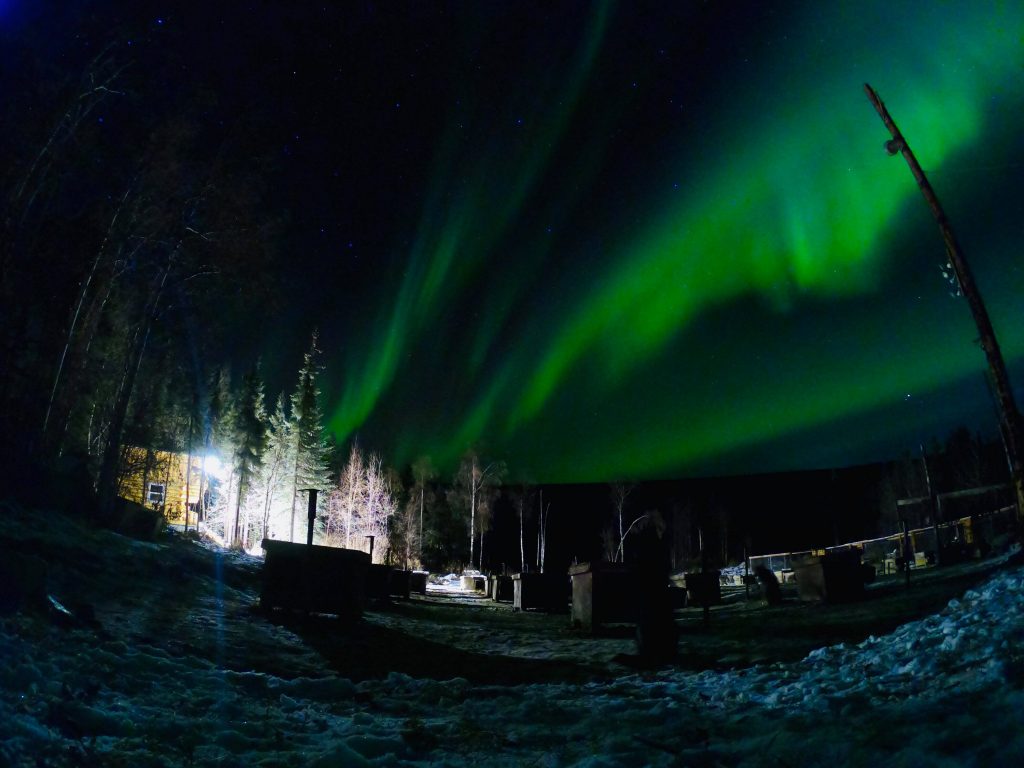
Leave the Lights on for Us -Victoria Forrester
